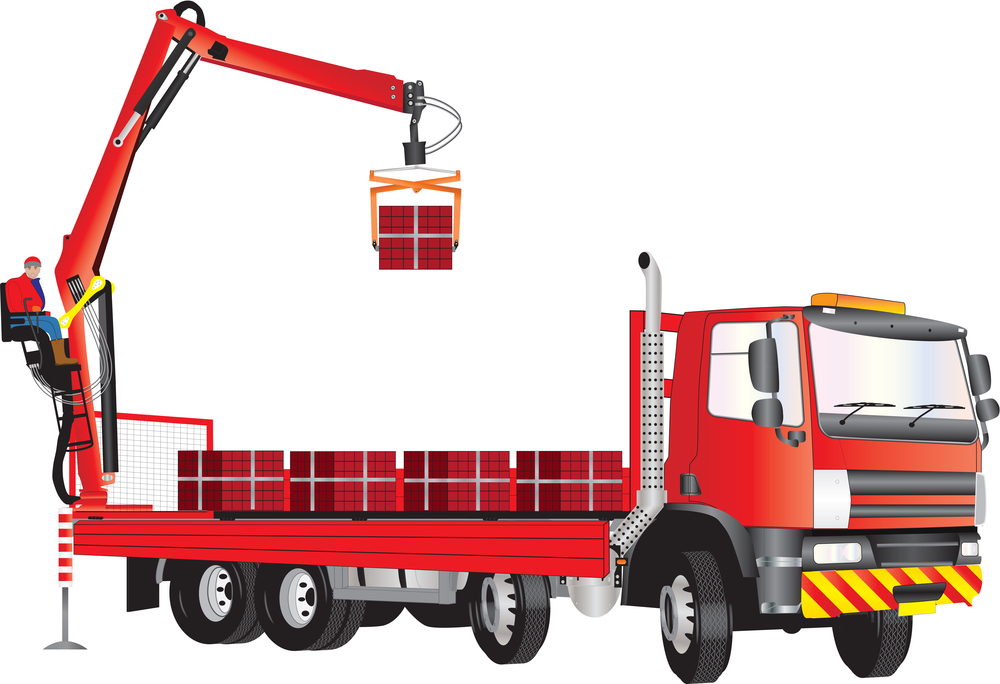Knuckle Boom Crane Training
 Knuckle Boom Crane Training and You—Do You Need It or Not?
Knuckle Boom Crane Training and You—Do You Need It or Not?
You see them almost every day but may not even know it. Knuckle Boom Cranes have become such an integral part of our lives here in America that we don’t even bat an eyelash when we see one driving down the road (unless it’s really big—like Effer’s 885 10-ton behemoth). But many much smaller knuckle boom cranes are used in various industries from delivery and construction to telecommunication and public utilities. You don’t think anything of passing a log truck on the highway or a pickup truck-mounted knuckle boom on your way to work—but maybe you should. With the growing prevalence of knuckle boom trucks in a wide array of industries, the need for knuckle boom crane training is increasing as well.
These types of lifting machines have been extremely popular in Europe for decades because their compact size and utility allows them to operate in tight quarters (like a village street) with extreme precision. They’re also very efficient—using hydraulic pistons for smooth, reliable lifting power. Now that popularity has really spread around the globe, making knuckle boom cranes essential equipment for hundreds of thousands of companies worldwide.
Here in The United States, understanding the rules, regulations, and requirements of knuckle boom crane training, certification, and operation can be a nightmare. Let’s see if we can demystify the world of this utilitarian lifting machine a little.
What is a Knuckle Boom Truck?
A knuckle boom truck is a truck onto which a knuckle boom crane has been mounted. Sounds simple right? Well, even this definition can get complicated. Knuckle boom lifts can be mounted on:
- Pickup trucks
- Commercial trucks
- Trailers
That mounting can be permanent or temporary. In some cases, the crane can even be removed from the truck and operated as a standalone unit—often seen in logging and forestry operations.
However, anytime these two pieces of machinery are connected, you have a knuckle boom truck.
Do OSHA Regulations Pertain to Knuckle Boom Cranes?
The agency which oversees and regulates almost every industry in which knuckle boom cranes are operating here in The United States is the Occupational Safety and Health Administration (OSHA). This agency creates a large number of rules and regulations pertaining to the safe operation of equipment in the workplace—including cranes.
Does OSHA have regulations that apply to knuckle boom cranes? Yes. At least in some cases. For example, if a knuckle boom truck is being used to deliver building materials to a construction site and simply drops those materials at ground level, it’s considered a delivery vehicle and no special certification is needed.
If that truck is supposed to deliver those materials above ground level (say to an upper story of a multi-level construction site) or to position equipment (like generators) at the site, it can be considered a construction vehicle. In that case, the operator needs to have certification from a nationally accredited agency.
However, that’s not to say that knuckle boom crane training is unnecessary. Even in circumstances in which certification isn’t required the operator must always be “qualified.” This qualification can often be demonstrated through on-the-job experience but may also be demonstrated through successfully completing a knuckle boom crane training course.
Do You Need Certification for a Knuckle Boom Crane?
Because knuckle boom cranes come in such a wide array of sizes and configurations and are used in such a variety of ways that certification isn’t always necessary. In The United States, certification requirements are almost always based on the machine’s lifting capacity (not necessarily the maximum height of the lifting equipment.
For example, if you’re operating a knuckle boom crane with a capacity of fewer than 5 tons, no special certification is needed in most cases. However, if you’re operating a knuckle boom with a capacity between 5 and 65 tons, certification is required.
This flow chart was created to help individuals understand federal regulations pertaining to the certification of crane operators. Just answer the questions as prompted and follow the arrows to find out whether or not you need accredited certification in order to safely (and legally) operate a knuckle boom crane in your area.
What Is the Most Popular Certification for Knuckle Boom Crane Training?
The National Commission for the Certification of Crane Operators (NCCCO) is a nationally accredited and OASHA-approved supervisory agency for crane training facilities and programs. Nationwide Crane Training has been using programs that strictly adhere to NCCCO guidelines for years to train and certify operators in the safe and proper use of a variety of equipment (including multiple types and classes of cranes). For example, NCT offers off-site private training sessions for both Articulated Boom Cranes (ABCs) and Articulated Boom Loaders (ABLs) in addition to their on-site crane training courses available at multiple campuses across the country.
NCT is also now offering NCCCO certified knuckle boom crane training in private, closed-enrollment classes at hosted locations all over The United States. The training program is flexible, affordable, and can be conducted when it suits your schedule at a location of your choosing.
To learn more about knuckle boom crane training and the various certification requirements for your company’s crane operators, contact NCT today. Call us at (877) 628-2762 or contact us online.



